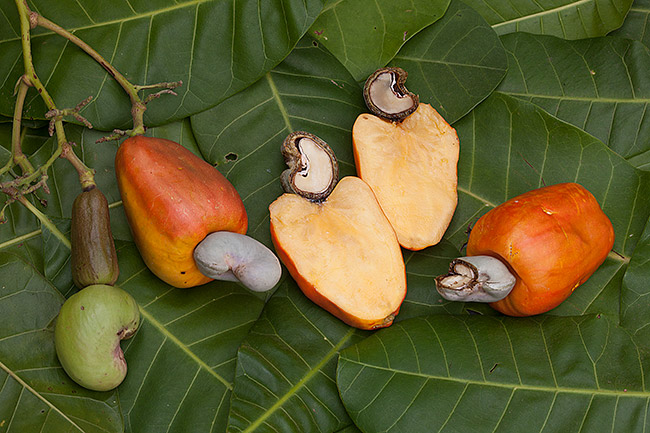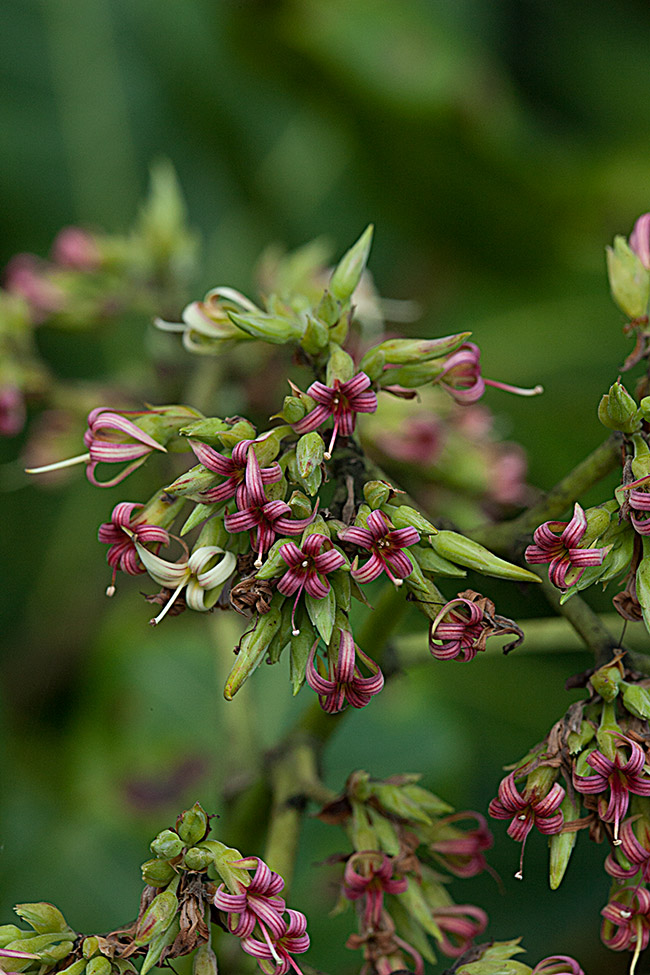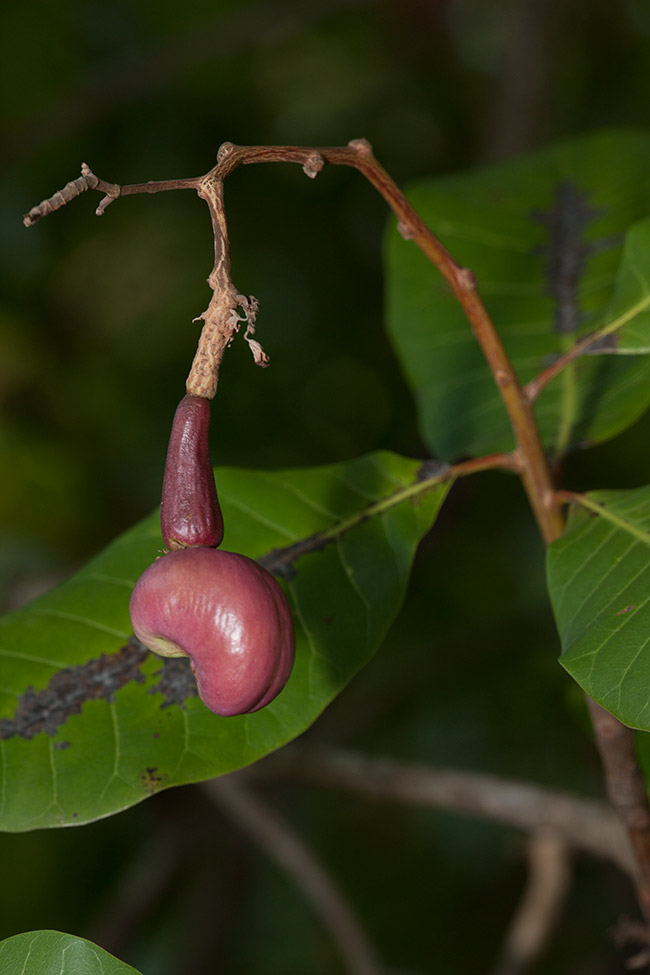The largest edible part of a cashew nut is actually not the nut at all, but the pear-sized fruit above the nut. A cashew nut is not a nut inside a round or even oval shell; a cashew nut is a protrusion outside at the bottom end of a soft tropical fruit! This soft red or yellow fruit is called a cashew apple.
As a further irony, the nut grows first, and only when the nut is practically full size does the fruit begin to grow. But eventually the fruit is about 800% larger than the nut. Here in Guatemala or any tropical country you can see and experience this visual treat. I use general terms for each part; botanists use technical terms which are different.
Anacardium occidentale, Cashew nut fruit, taken with a Canon EOS-1Ds Mark III, From the Flaar photo Archive. Taken on 2013.
The cashew apple is fully edible but is usually thrown away. Kind of ironic that the cashew tree is a member of the same plant family as mango, the Anacardiaceae.
Because the cashew apple is so soft, it is easily damaged when it falls from the tree, or when handled after harvesting, and especially susceptible to damage from being packed and shipped. Plus it rots very quickly (especially if scrapped or otherwise damaged). But actually the cashew apple is completely edible and does not need to be treated or processed (the nut has several unpleasant chemicals on its outside which have to be removed by treating and then the remains physically scraped off the nut kernel). The chemicals which have to be removed from around the nut are evidently not noticeable inside or around the soft fruit.
We often pick the fruits direct from trees or we buy the entire fruit in a market so we can photograph them. But I will admit that in 50 years in Guatemala I have never eaten a cashew apple nor have I drunk its juice. It is definitely not hard like an apple.
Digital render of Anacardum occidentale, Copyrigt FLAAR 2014, by Melanny Quiñonez.
What is a Cashew Nut, from the Anacardium occidentale tree?
The cashew nut is not a seed inside a hard shell; the cashew nut sticks out far below the fruit. Furthermore the cashew nut is not encased in either a round or oval shell. The enclosure of the nut is simply an outer layer in precisely the same curved typical cashew nut shape. The cashew nut is also a member of the same plant family as the pistachio nut (same Anacardiaceae family as the mango).
Botanists have specialized jargon for all of this, which we will show in our photographs and renderings.
The nut is encased in plant chemicals which are poisonous. You can easily get rid of the poisons by heating or otherwise treating the nut. But I have never had the patience to do this since it is so easy just to buy the nuts already finished.
Cashew Tree Flowers
The flowers vary in color (as do the resultant fruits: yellow, yellow-orange, orange, reddish). Here we show a range of flower sizes and colors.
Anacardium Occidentale Flowers, Photo by Nicholas Hellmuth.
What is the Development Cycle of Cashew Nuts from the flower?
The nut forms first. The nut gets bigger and bigger, with a bright green outside. Then the stem above the nut starts growing. This turns into the large mango-sized and mango-soft fruit (but taste is distinctive; definitely not mango taste).
The fruit you can eat as-is; the nut is surrounded by chemicals which are slightly poisonous. By treating the entire nut "pod" and then prying the kernel out afterwards, you get a clean cashew nut which you can enjoy at home or at your next social event.
When someone offers me a bowl of mixed nuts at a cocktail party, my fingers can detect the cashew nuts and separate all cashews from all other nuts: so most of the cashew nuts get devoured out of the bowl. Although I also like walnuts, almonds, etc. it's the cashew nuts that I definitely enjoy the most: taste-wise and because they are not tough or hard as almonds.
Anacardum occidental, fruit nut, and plant, Photography by Nicholas Hellmuth
First Posted, August 14 2014
Our original page, a general introduction to cashew nuts, has been on this site for several years. Today we update that earlier page with a completely new page focused on more emphasis on the "apple" part of the cashew fruit.

















































































